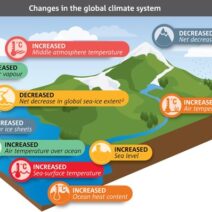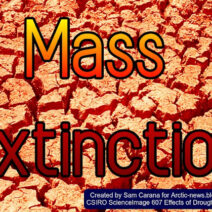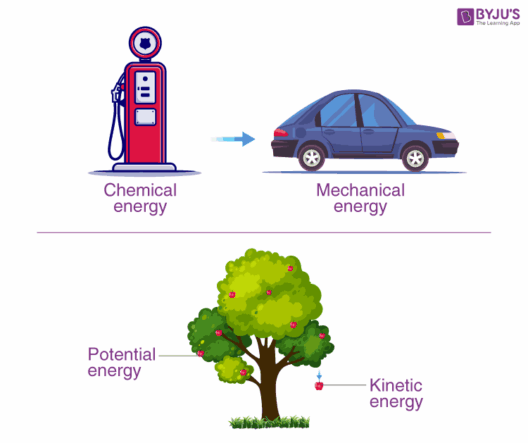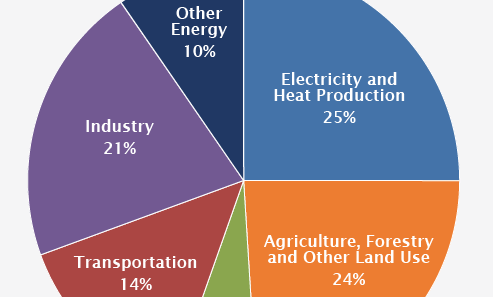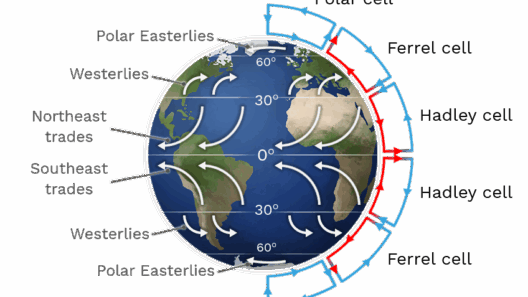Global dimming is an intriguing phenomenon that reveals a paradox hidden within the climate crisis. It articulately encapsulates the complexities and unintended consequences of anthropogenic activities on our planet’s climate. Whereas the prevailing narrative emphasizes the destructive effects of greenhouse gas emissions, global dimming introduces a significant counter-narrative that brings forth a renewed perspective on climate science and policy.
At its core, global dimming refers to the reduction in the amount of sunlight reaching the Earth’s surface, primarily attributed to air pollution, particularly aerosols. This gradual yet profound alteration in solar radiation has far-reaching implications for global climate systems, weather patterns, and even human health. It is a term that first gained traction in scientific discourse during the 1990s, following a series of studies that identified long-term trends in solar radiation decline. These trends were particularly pronounced in regions plagued by heavy pollution, leading researchers to examine the intricate balance between human activity and atmospheric changes.
The primary culprits behind global dimming are atmospheric particulates—tiny particles suspended in the air. Aerosols come from various sources, including tailpipe emissions, industrial discharges, and agricultural practices. These small particles scatter and absorb sunlight, preventing it from reaching the Earth’s surface. Interestingly, while the diminishment of sunlight is often detrimental to crop yields and natural ecosystems, aerosols have a paradoxical relationship with global warming. They temporarily mask the effects of greenhouse gas emissions by creating a cooling effect in the atmosphere.
As a result, the immediate impacts of pollution, although deleterious, can obscure the more insidious influence of climate change. In this light, global dimming may serve as a double-edged sword. While it mitigates warming to some extent, it also fosters a false sense of security among policymakers and the public regarding the severity and immediacy of climate change. The lingering effects of aerosols can thus lead to complacency, impeding more robust interventions aimed at reducing carbon emissions.
There is an urgent need to delve deeper into this paradox. Understanding the nuances of global dimming can shift our perspective on climate crises and inform more effective climate strategies. For instance, if the world were to curtail aerosol emissions too aggressively in an attempt to improve air quality, the abrupt cessation of global dimming could potentially precipitate a rapid temperature increase. This illustrates that simply eliminating pollution is not a panacea and highlights the importance of integrating air quality improvements with climate policy. The revelation of this interconnection underscores the imperative of holistic approaches in addressing both air pollution and climate change.
Moreover, global dimming has profound implications not only for environmental policy but also for the social and economic fabric of society. Many countries, particularly those in the Global South, rely heavily on agriculture as a linchpin of their economies. The interaction between global dimming and agricultural productivity is an area rife with complexity. While a certain degree of aerosol-induced dimming may shield crops from the harshest effects of climate change, over-reliance on this phenomenon could lead to vulnerabilities if aerosol levels were to decline precipitously.
This interconnectedness bears immense significance in discussions surrounding climate justice. Low-income communities, often situated in polluted environments, may initially benefit from reduced warming due to regional dimming, but they simultaneously bear the brunt of poor air quality and health crises. Such disparities underscore the urgency of equitable climate action that prioritizes both emissions reduction and health improvements globalizing the narrative beyond mere carbon calculations.
As we explore viable pathways to curtail greenhouse gas emissions, scientists are investigating innovative geoengineering solutions that may mimic the cooling effects of aerosols. Techniques such as stratospheric aerosol injection—deliberately introducing aerosols into the stratosphere to reflect sunlight—present both promise and peril. While such methods could theoretically counteract some warming, they carry significant ethical and governance ramifications. This raises pressing questions: Who decides if and how to manipulate the Earth’s climate? What are the long-term consequences for ecosystems, weather systems, and humanity?
Transitioning from a reliance on fossil fuels to sustainable energy alternatives remains paramount, yet the conversation must extend beyond carbon footprints. The phenomenon of global dimming invites us to grapple with the intricate interplay between different forms of pollution and their effects on our climate. It emphasizes the necessity of developing a more nuanced understanding of how air quality, climate, and human health are intertwined.
With the reality of climate change looming larger than ever, the phenomenon of global dimming serves as a reminder that our planet’s system is not a linear equation. Instead, it is a complex web of interactions, where each thread impacts others in unforeseen ways. Our challenge lies not only in mitigating greenhouse gas emissions but also in understanding the broader implications of our actions, both intended and unintended.
In conclusion, the paradox of global dimming encapsulates a critical element of the climate crisis discourse that demands attention. As we navigate the complexities of environmental policy, we must remain vigilant to the nuances of climate science, which entails considering the full spectrum of human impact on the atmosphere. By doing so, we stand to gain not only a deeper comprehension of climate dynamics but also create informed strategies to forge a sustainable future.
